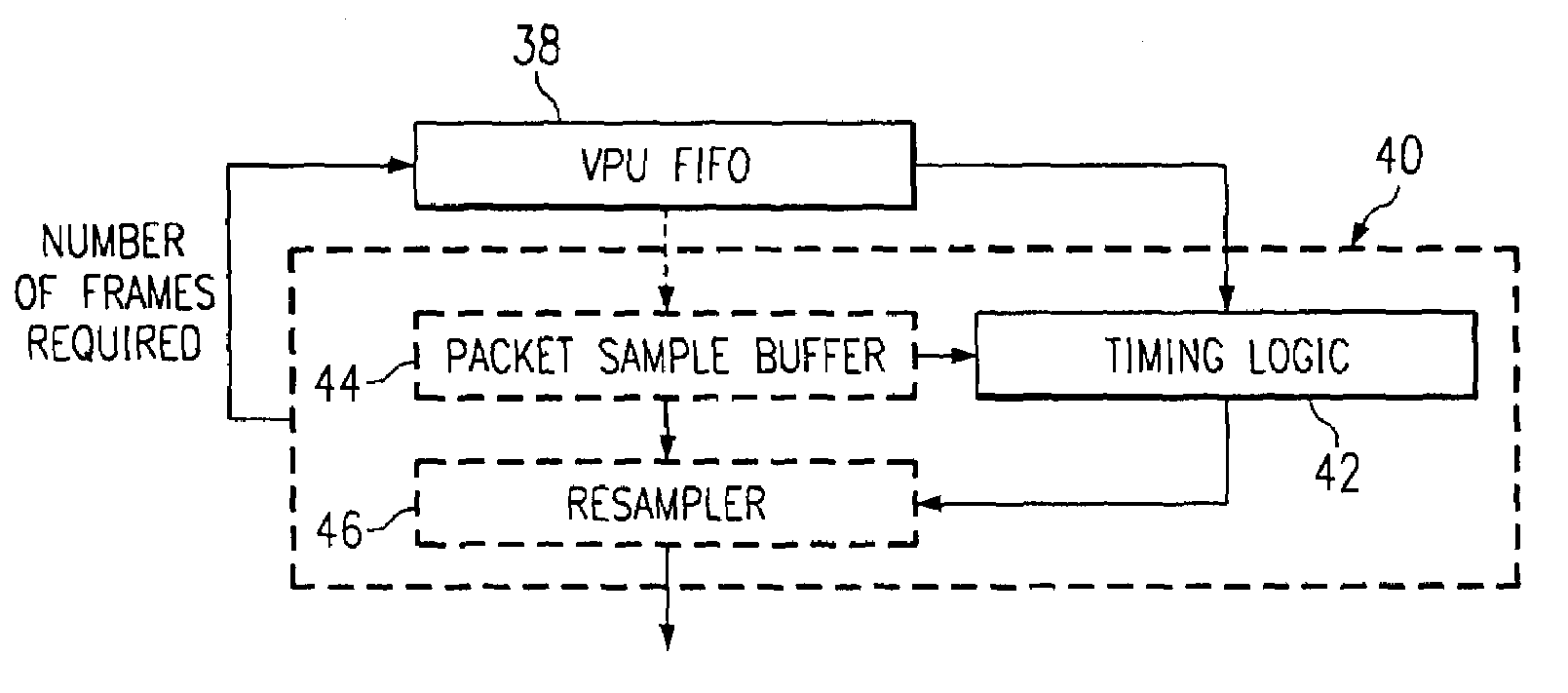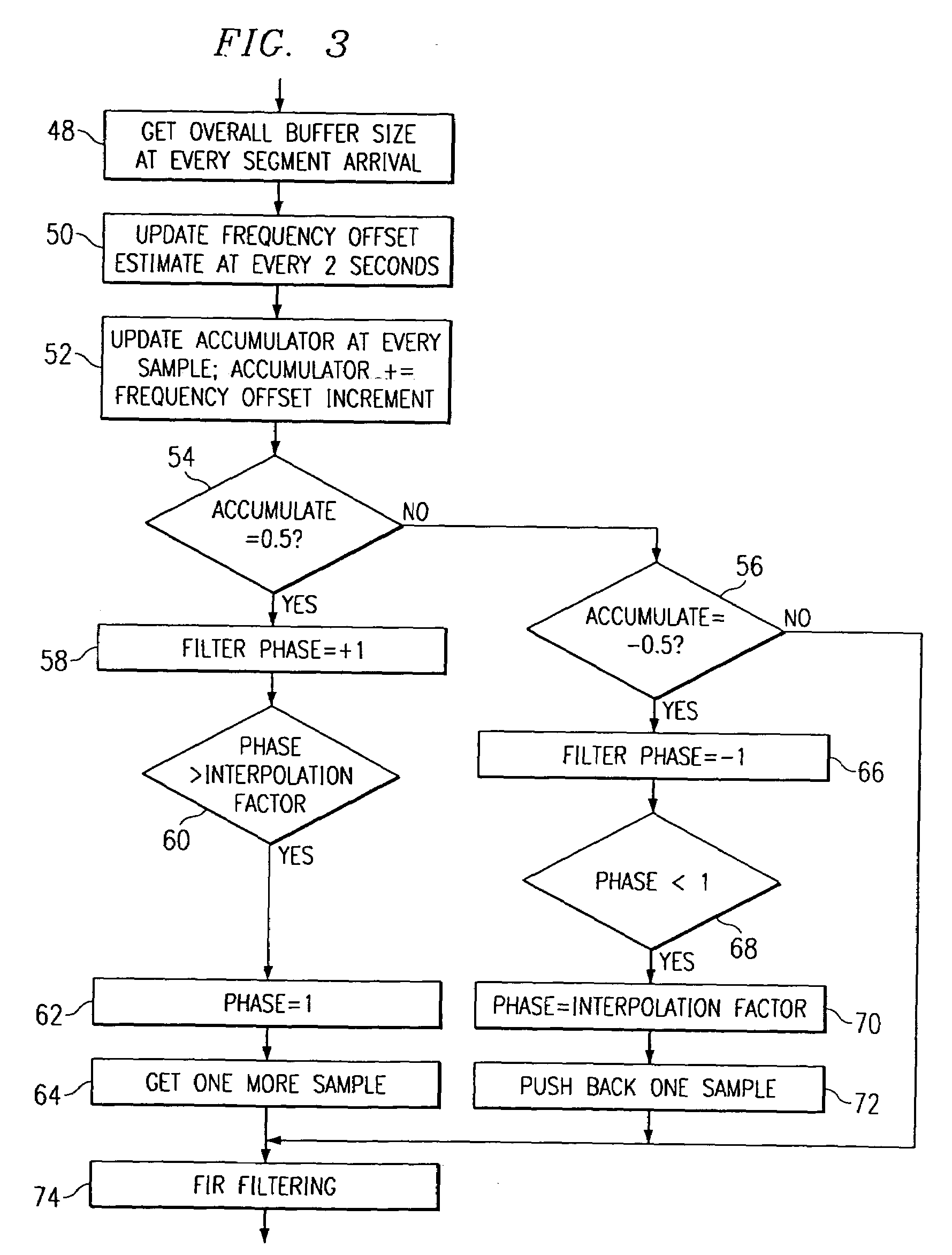Calculation of clock skew using measured jitter buffer depth
a clock skew and buffer depth technology, applied in the field of system for measuring clock skew, can solve the problems of packet-switched network quality of service of realtime voice and video communication data transmission over packet-switched network, such as the internet, packets are likely to accumulate delay, packets arrive out of sequence and/or gaps, etc., to achieve smooth playout and increase or decrease playout speed
- Summary
- Abstract
- Description
- Claims
- Application Information
AI Technical Summary
Benefits of technology
Problems solved by technology
Method used
Image
Examples
Embodiment Construction
[0019]Referring to FIG. 1, a typical packet network utilizing Internet protocol is illustrated. At the near end, a personal computer 10 is connected to gateway 16 through modem 12. Modem 12 connects to gateway 16 through the public switched telephone network (PSTN) 14. An Internet protocol (IP) telephone 18 is also directly connected to communications port on gateway 16 through a network connection 20. Gateway 16 is connected to a packet network, such as the Internet 24 with a broadband or high-speed connection 22 such as a digital subscriber line (DSL) or T1 / T5 line. At the far end, a similar network is configured through gateway 26 that is connected to the Internet 24 via a high-speed connection 28. PC 30 is connected to gateway 26 through modem 32, and IP telephone 34 is directly connected to a communication port on gateway 26 through a network connection 36.
[0020]The system of the present invention can be implemented on either the near end's gateway 16 alone or both the near and...
PUM
 Login to View More
Login to View More Abstract
Description
Claims
Application Information
 Login to View More
Login to View More - R&D
- Intellectual Property
- Life Sciences
- Materials
- Tech Scout
- Unparalleled Data Quality
- Higher Quality Content
- 60% Fewer Hallucinations
Browse by: Latest US Patents, China's latest patents, Technical Efficacy Thesaurus, Application Domain, Technology Topic, Popular Technical Reports.
© 2025 PatSnap. All rights reserved.Legal|Privacy policy|Modern Slavery Act Transparency Statement|Sitemap|About US| Contact US: help@patsnap.com



